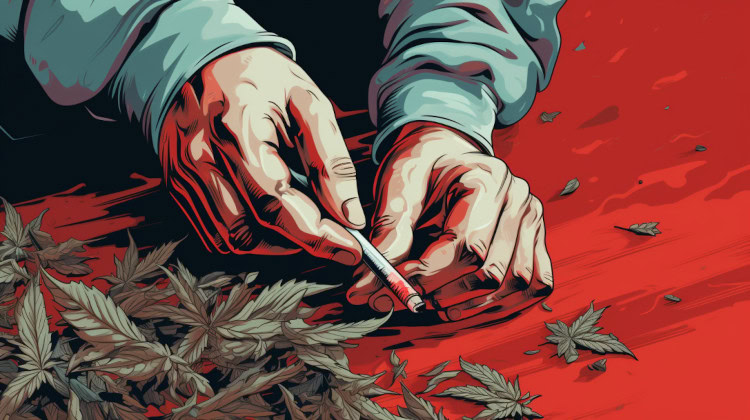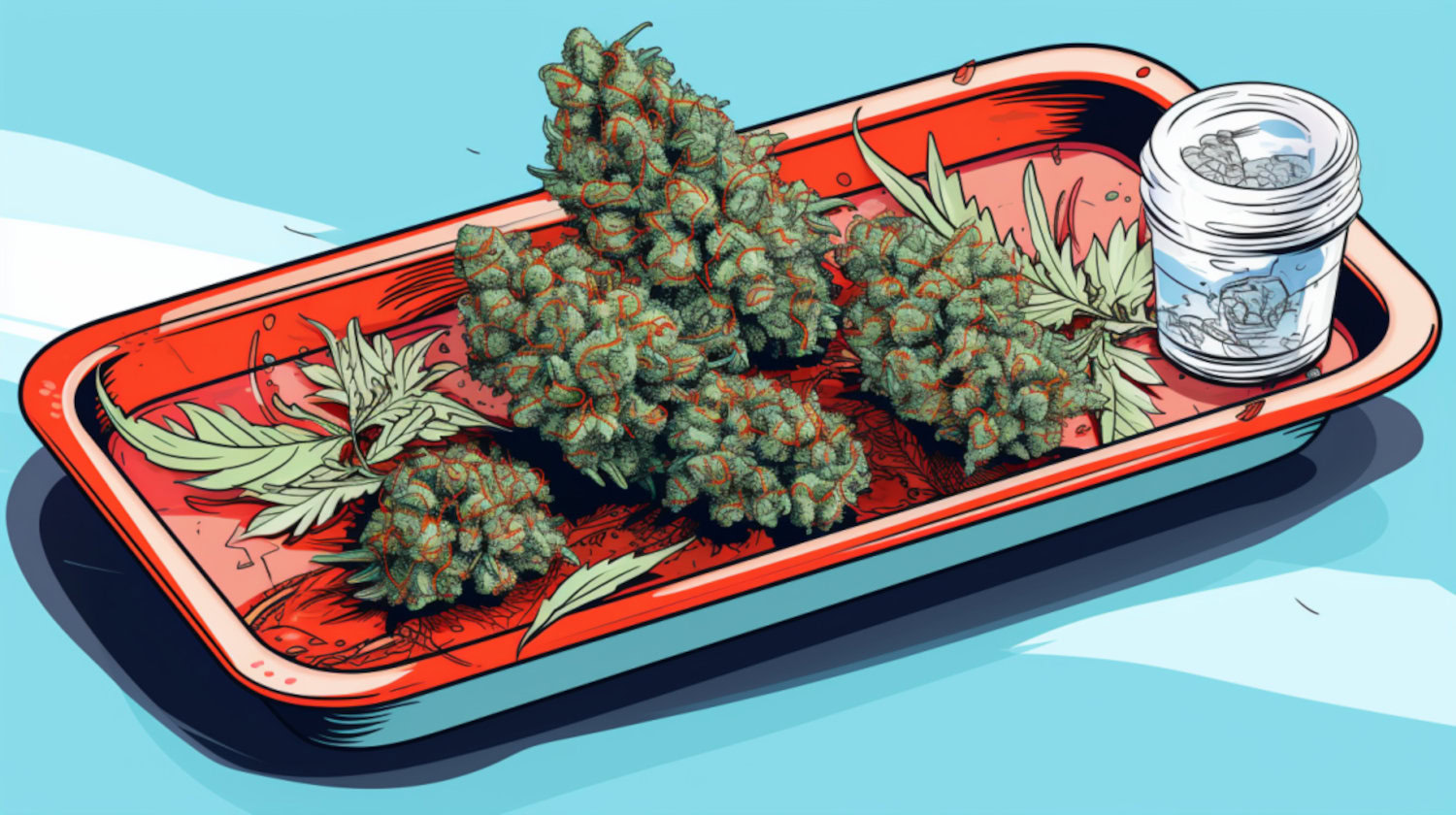Key Takeaways
- Swisher Sweets are a popular choice for rolling papers when making blunts.
- Basic needs: Swisher wraps, cannabis. Optional: Grinder, sharp cutting tool, rolling tray
- Grind flower > Prepare the Swisher Wrap > Fill the wrap with flower > Roll > Seal > ‘Bake’ > Enjoy!
After consuming cannabis for thousands of years, humans have developed several methods to enjoy the plant’s benefits. Today, the popular options include smoking via blunts, spliffs, joints, bongs, bubblers, and chillum pipes.
Each method offers a distinct experience in terms of flavor and effect. One of the most notable options is the blunt. Users note its alternative wraps in various flavors and the heightened effects it can provide.
Blunts can be rolled with an array of papers. One of the popular paper brands is Swisher Sweets.
Many consumers, whether experienced or not, wonder how to roll a Swisher.
What are Swishers?
Swisher Sweets are inexpensive cigarillos that, despite not being very popular in the cigar community, have gained a reputation with cannabis users.
The machine-made cigarillos don’t offer the most excellent cigar experience, but are a benchmark in convenient, accessible, and enjoyable blunt wraps. Swishers and other low-quality cigars stand out as high-quality blunt wraps due to their affordable price points and accessibility, with most found at nearby convenience stores and gas stations.
Acquired in 1861 by David Swisher in Newark, Ohio, as part of a debt settlement, the company took on the new owner’s namesake. Swisher Sweets has evolved into a fixture in the mass-produced, low-cost cigar market. In 1923, the company revolutionized the cigar industry, becoming the first to adopt and order rolling machines. A slew of flavors rolled out over the years, with the company becoming Swisher Sweets in 1958 and establishing its headquarters in Jacksonville, Florida.
Since then, they’ve continued evolving and remain a low-cost cigar market leader. Today, Swishers are renowned for their consistent and affordable variety of flavors, including Original, Diamonds, Grape, Coastal Cocktail, Island Bash, and many more, available in both full and mini sizes.
Comparing Swishers to other popular blunt wraps and cigars, such as Backwoods, presents a subjective discussion, with each person having a different take.
Swishers are often regarded as one of the best options on the market, thanks to their mild flavor and relative ease of rolling. However, some users consider Backwoods easier to work with and unravel. Both options are easy enough to figure out.
Why Are Swisher Sweet Blunts So Popular?

From accessibility to versatility to cultural significance, Swisher Sweets are beloved by an array of cannabis blunt smokers for several reasons, such as:
- Additional effects from consuming tobacco and cannabis simultaneously
- Flavor variety
- Affordability
- Ease of use for beginners
- Availability
- Consistency
- Brand recognition
- Array of sizes
Blunt’s popularity over the years has translated into numerous cultural shout-outs, particularly in cannabis media and music, where Swishers and other brands have been positively called out on tracks.
However, despite the popularity of blunts, there's little to no support for their superiority claim over pre-rolls or other hand-rolled options. Still, many enjoy the additional feelings produced by mixing tobacco and cannabis that comes in Swishers and other blunt wraps.
Despite their popularity, many side effects can occur. Possible adverse effects range from addiction to increased carbon monoxide and carcinogen exposure to short-term cognitive impairment and nausea.
Over the years, additional health concerns centering on the contaminants consumed by blunt wraps and cigarillos have been well-established. Today, smoking of any kind is often considered a public health crisis, with legalized cannabis sales potentially exacerbating the problem.1
What You'll Need to Roll a Swisher
The items needed to roll classic Swisher Sweet blunts shouldn’t be difficult to find. More likely than not, you’ll find most of the items in your home, with just a trip to your local smoke shop for a few extra essentials.
Gather the following items:
- Swisher wraps
- Medium, evenly ground cannabis
- Grinder (Optional but recommended)
- A sharp cutting implement: Razor blade, Exact-O Knife, or special “blunt splitter”(Optional but recommended)
- Rolling tray (Optional but recommended)
- Ligher or matches (Optional but recommended)
How to Roll a Swisher

Rolling a Swisher is similar to a joint, but several differences make the process stand out from other smoking options. Follow these steps to get an understanding of blunt rolling basics with a Swisher Sweet:
- Step 1: Grind your weed to a shake-like consistency, avoiding over-fine grinding that can damage the flower.
Pro-tip: Use a grinder for a more consistent burn. If you don't have a grinder, you can use your hands, scissors, or a similar method.
- Step 2: Prepare your wrap by opening the Swisher. You can cut it lengthwise with a sharp blade or by hand (gently pull apart at the seam, lengthwise). Be careful not to cut yourself. Once split, remove and discard the tobacco leaves inside.
Pro-tip: There are special tools called blunt splitters that make opening a swisher easy with one swift pull through.
- Step 3: Wet the entire inside of the Swisher wrap with water or saliva to make it easier to handle and less susceptible to tearing.
Pro-tip: Don’t saturate the blunt wrap; a gentle dusting of moisture is best. Try quick dipping a paintbrush in water
- Step 4: Fill the wrapper with your ground cannabis. Most Swisher full sizes will require one or two grams of flower to fill fully.
Pro-tip: This is when the rolling tray will come in handy, keeping your working area clean by catching any stray nugs during the process.
- Step 5: Roll the Swisher wrap evenly, tucking as you go. Once done, moisten the remaining unrolled wrap edge to the blunt to seal in the contents and hold the wrap’s shape.
Pro-tip: This is often where people can get frustrated with the process. Stay calm, be patient, and know that the best blunt rollers had to roll a lot of not-so-great blunts before they perfected the process.
- Step 6: Dry the still-damp wrap by gently running the flame from a lighter over it, being careful not to burn the wrap.
Pro-tip: This step is referred to as ‘baking’ the blunt.
- Step 7: Light and Enjoy!
Pro-tip: If you’re saving the blunt for later by place it in a cool, dark space away from sunlight and other elements.
Common Swisher Rolling Mistakes and How to Avoid Them
Rolling Swisher Sweet blunts are a bit different than other smoked options, and can take a few tries to master. Avoiding these common mistakes will help cut down on any learning curve:
- Unmoistened Wraps: Moisten the leaf before you begin splitting to avoid uneven burns and sealing issues. Make sure you don’t over-saturate the papers.
- Over- and Underfilling: Using excessive or inadequate amounts of cannabis can lead to uneven burning and airflow issues.
- Rolling: Blunts rolled too tightly or excessively loose will result in airflow issues.
- Not Fully Sealed: Unsealed parts can disrupt airflow in the blunt and fail to deliver smoke to your lungs.
References
- Giovenco DP, Spillane TE, Mauro C, Martins SS. Cigarillo sales in legalized marijuana markets in the U.S. Drug and Alcohol Dependence. 2018;185:347-350. doi:https://doi.org/10.1016/j.drugalcdep.2017.12.011 ↩︎
The information in this article and any included images or charts are for educational purposes only. This information is neither a substitute for, nor does it replace, professional legal advice or medical advice, diagnosis, or treatment. If you have any concerns or questions about laws, regulations, or your health, you should always consult with an attorney, physician or other licensed professional.




